Combat use of turboprop attack aircraft in the 1970-1990s
Turboprop anti-guerrilla attack aircraftIn the 1970s and 1990s, the Americans supplied their allies with the OV-10 Bronco and A-37 Dragonfly anti-guerrilla attack aircraft. However, not all countries where there were problems with various kinds of insurgents and armed groups of the drug mafia could receive specialized anti-insurgency aircraft for political and economic reasons. In this regard, obsolete strike aircraft or converted from piston and turbojet trainer vehicles (AT-6 Texan, AT-28 Trojan, Fouga Magister, T-2D Buckeye, AT-33 Shooting Star, BAC 167 Strikemaster). The decrepit piston aircraft required careful maintenance, and flights on them, due to the high degree of wear, were associated with a high risk, and improvised attack aircraft with turbojet engines turned out to be quite expensive to operate and could carry a relatively small combat load. A common disadvantage of piston and turbojet attack aircraft built on the basis of the TCB was the almost complete absence of armor and structural elements that increase resistance to combat damage, which made them vulnerable even to shelling from a light rifle weapons.
As the resource depleted, piston and turbojet training aircraft built in the 1940s-1960s were decommissioned and replaced by turboprop machines. In August 1978, serial production of the PC-7 Turbo Trainer turboprop aircraft began. This TCB, designed by the specialists of the Swiss company Pilatus, was not the first aircraft of this purpose equipped with a turboprop engine, but it was it that, thanks to a successful combination of high flight data, reliability and relatively low operating costs, became widespread. The RS-7 trainer was operated in more than 25 states. Taking into account the modernized options, more than 600 aircraft were built.
The aircraft with a maximum take-off weight of 2710 kg was equipped with a Pratt Whitney Canada PT6A-25A turbofan with a capacity of 650 hp and a three-blade Hartzell HC-B3TN-2 propeller. The maximum speed in level flight is 500 km / h. Stall speed - 119 km / h. Ferry flight range - 1350 km. Bombs, blocks with unguided rockets and containers with 7,62-12,7 mm machine guns with a total weight of up to 1040 kg could be placed on six hardpoints.
The Swiss government severely limited the supply of defense products abroad, and at the stage of concluding a contract with a foreign customer who had territorial disputes with neighbors or insurgents operated in the country, the condition was specially stipulated that the aircraft would not be used for military purposes. Despite this, in the Air Force of a number of countries, the PC-7 was used as a light attack aircraft. At the time of its appearance, the PC-7 had practically no competitors in the global arms market, and it was very popular among foreign customers. Everyone was happy, the Swiss sold it as a peaceful training aircraft, and the customers, after minor modifications, received a fairly effective and inexpensive anti-guerrilla attack aircraft. Since the aircraft were delivered without weapons and sights, they were re-equipped already on the spot or at aircraft repair enterprises in third countries. At the same time, additional electrical harnesses were laid, suspension assemblies, sighting equipment, buttons and toggle switches for weapon control were mounted. Often, but not always, on Pilatus, capable of carrying aviation means of destruction, installed local armoring of the cabin and nitrogen cylinders to prevent the explosion of fuel vapor when the fuel tanks are shot.
Based on the available information, the RS-7 were first used in combat in 1982 during the Guatemalan Civil War. Twelve Pilatus converted into stormtroopers conducted armed reconnaissance in areas controlled by leftist insurgents. It is reliably known that the RS-7 Turbo Trainer turboprop, together with the A-37 Dragonfly jet attack aircraft, bombarded and bombed not only partisan camps, but also villages inhabited by civilians, during which, in addition to bombs and NAR, napalm was also used. During the civil war, American advisers shared with the Guatemalan military their experience of using counter-guerrilla aircraft in Vietnam. The United States also funded flight training, aircraft repairs, and the purchase of spare parts.
One Pilatus was shot down by small arms fire, and at least one more, which received serious damage, had to be written off. After the end of the civil war, most of the turboprop attack aircraft were taken out of service. In 2019, the Guatemalan Air Force had one PC-7, which was used for training flights.
Almost simultaneously with Guatemala, 16 PC-7s were purchased by Burma. After the conversion, the attack aircraft deployed at the Lashio airfield were actively used against the rebels operating in the northeastern part of the country. One plane was shot down by anti-aircraft fire, three more crashed in flight accidents. Several Pilatus from this party are still in the ranks, but they are no longer used in counterinsurgency operations. For this purpose, the Chinese A-5C jet attack aircraft and the Russian Mi-35 combat helicopters are intended.
In 1982, Angola acquired 25 PC-7 Turbo Trainers, and at the first stage these machines were used for their intended purpose. In the early 1990s, the Pilatus, run by South African mercenaries of the private military company Executive Outcomes, played an important role in the defeat of the armed group UNITA. South Africans, hired by the Angolan government, flew risky jungle flights in search of UNITA facilities. After the discovery of the camps and positions of the militants, they were "marked" with phosphorus munitions. Point targets were attacked by jet MiG-23s, and areal targets were covered with 250-kg mines of An-12 and An-26 transport aircraft converted into bombers. The evasion from the target at an extremely low altitude and the low thermal signature of the turboprop engine allowed the Pilatus to avoid being hit by MANPADS missiles. The pilots of the South African company Executive Outcomes have demonstrated that, with the correct tactics of use, turboprop aircraft used in the role of advanced aviation gunners are capable of successfully operating against an enemy with 12,7-14,5-mm anti-aircraft machine guns, 23-mm twin anti-aircraft guns at their disposal -23 and MANPADS "Strela-2M". In 1995, several PC-7s, piloted by mercenary Executive Outcomes, also fought against the Revolutionary United Front (RUF) in Sierra Leone.
Pilatus PC-7 Turbo Trainer aircraft were used by both sides during the Iran-Iraq war. Iraq received 52 aircraft in 1980 and Iran 35 in 1983. Although these vehicles were initially unarmed, they were quickly militarized by local aircraft repair companies. Along with the performance of training flights, turboprop "Pilatus" were used for reconnaissance, observation and adjustment of artillery fire. There are cases when they struck NAR at the front edge of the enemy. A number of sources say that converted Iraqi PC-7s in the late 1980s sprayed toxic substances over areas of compact residence of Kurds, which was later recognized as a war crime. The use of training aircraft for the use of chemical weapons has led to the tightening of control by the Swiss government over their exports, which largely opened the way for the Brazilian Tucano. At present, all PC-7s used by Iraq have been decommissioned, and in Iran, according to reference data, two dozen machines are still in flight condition.
In 1985, two PC-7s were added to the Chad Air Force. These aircraft were donated by France to replace the outdated A-1 Skyraider piston attack aircraft and were flown by French pilots. Turboprop aircraft fought on the side of the incumbent president, Hissén Habré, against the detachments of ex-president Gukuni Oueddei and the Libyan troops supporting him. The fate of these aircraft is unknown, as early as 1991 they did not take to the air. Three RS-7s, delivered in 1995, conducted armed reconnaissance and attacked rebel convoys in areas bordering Sudan. Two Pilatuses are still on the Chadian Air Force's payroll.
The first of 88 ordered PC-7 trainers entered the Mexican Air Force in 1980. Soon, some of the aircraft were armed with NAR blocks and containers with machine guns. These machines were used for training and learning to attack ground targets, and also made patrol flights in hard-to-reach areas of the country.
In 1994, Mexican RS-7s fired 70mm unguided rockets at the Zapatista Army of National Liberation (EZLN) camp in Chiapas. Human rights organizations have cited evidence that many civilians were injured, which ultimately led to a ban imposed by the Swiss government on the sale of training aircraft to Mexico. According to information published by World Air Forces 2020, the PC-7 light turboprop attack aircraft are currently the most massive and efficient Mexican combat aircraft. Fuerza Aérea Mexicana, there are 33 units overall.
Considering how widespread the PC-7 turboprop got in the Third World countries, the above list of armed conflicts in which these aircraft participated is incomplete. Some of the machines have changed hands repeatedly. Due to the relatively low cost of operation and unpretentious maintenance, "Pilatus" were a liquid product on the "black" arms market. So, several TCB RS-7, delivered in 1989 by the Bophuthatswana Air Force, were at the disposal of mercenary groups, were re-equipped and from the second half of the 1990s were used in the "Great African War", in which more than twenty armed groups representing nine states participated. It can be stated that the efforts of the Swiss government to prevent the participation of RS-7 aircraft in armed conflicts were in vain. Nevertheless, the high demand for turboprop trainer aircraft stimulated the process of their improvement. The modification known as the PC-7 Mk II received a new wing and a 6hp Pratt Whitney Canada PT25A-700C engine.
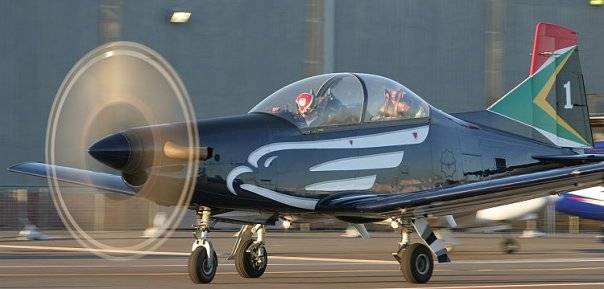
PC-7 Mk II South African Air Force
The evolutionary version of the development of the RS-7 TCB was the PC-9. Serial production of the PC-9 began in 1985. The aircraft retained the same layout; it differed from the RS-7 with the Pratt Whitney Canada PT6A-62 engine with a capacity of 1150 hp, a more durable glider, improved aerodynamics and ejection seats.
The aircraft with a maximum take-off weight of 2350 kg has a combat radius of 630 km. The maximum speed in level flight is 593 km / h. Cruising speed - 550 km / h. Stall speed - 128 km / h. The payload weight on six hardpoints is 1040 kg. The RS-9 can simultaneously carry two 225 kg and four 113 kg bombs or containers with machine guns and NAR units.
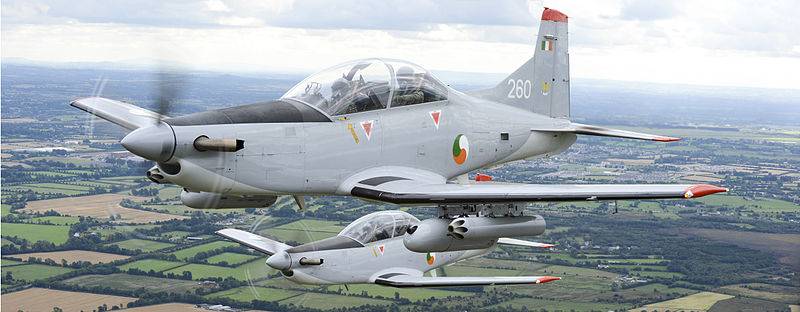
RS-9 Irish Air Force
The RS-9 was created by order of the British Air Force, but instead the upgraded Embraer EMB 312 Tucano was adopted, licensed production of which was launched in 1986. The first buyer of the RS-9 TCB was Saudi Arabia, which ordered 20 aircraft. As of 2020, over 270 copies have been produced. Given the widespread use of the RS-7 in armed conflicts, the sale of the RS-9 to third world countries was limited. Despite attempts by the Swiss government to avoid the involvement of exported aircraft in regional conflicts, this proved to be impracticable. Chadian Air Force PC-9s fought on the border with Sudan, and Myanmar Air Force used them to fight insurgents. Aircraft of this type are also available in Angola, Oman and Saudi Arabia. These countries were highly likely to use aircraft in combat as reconnaissance aircraft and light attack aircraft, but there are no reliable details.
As already mentioned, the restrictions imposed by the Swiss government on the export of turboprop attack aircraft played into the hands of the Brazilian aircraft manufacturer Embraer. In 1983, Brazil began mass production of the EMB 312 Tucano aircraft, which from the very beginning was positioned not only as a trainer, but also as a light attack aircraft. Initially, at the design stage, the task was to minimize the life cycle cost. The Tucano, being one of the most successful and commercially successful modern combat training aircraft, has become the hallmark of the Brazilian aviation industry and has received well-deserved recognition both in Brazil and abroad. This aircraft is in many ways a kind of benchmark for the creators of other trainers and light multipurpose combat aircraft with a turboprop engine. Turboprop EMB 312, in addition to training pilots, showed itself very well as a light attack aircraft and patrol aircraft in "counter-guerrilla" operations, where there was no opposition from fighters and modern air defense systems.
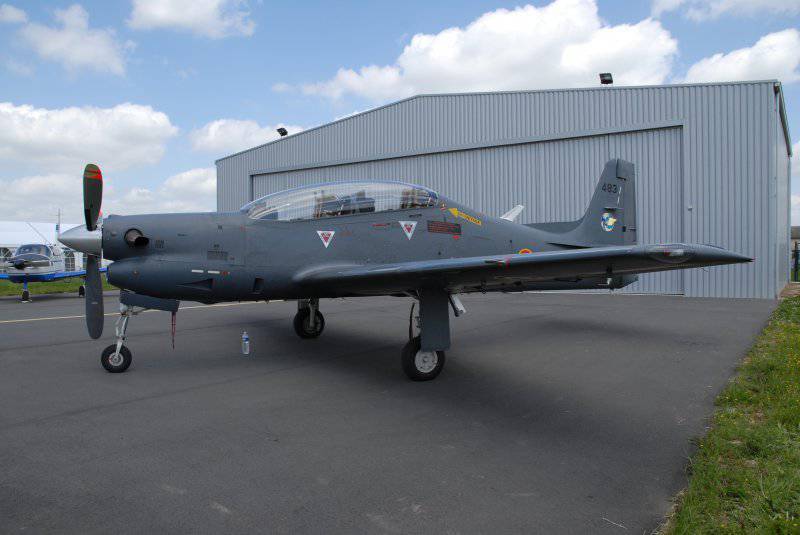
EMB 312 Tucano
Like the training and combat aircraft RS-7 and RS-9, produced by Pilatus, the Brazilian Tucano is built according to a normal aerodynamic configuration with a low-lying straight wing and outwardly resembles piston fighters of the Second World War. The "heart" of EMB 312 Tucano is the Pratt Whitney Canada PT6A-25C with a capacity of 750 hp from. with a three-bladed variable-pitch propeller. In horizontal flight, the aircraft is capable of speeds of 458 km / h. Cruising speed - 347 km / h. Stall speed - 128 km / h. Maximum takeoff weight - 2550 kg. Ferry range - 1910 km. When using outboard fuel tanks, the Tucano can stay aloft for more than 8 hours.
There are two aircraft modifications under the brand name EMB 312 Tucano: T-27 and AT-27. The first option is mainly intended for in-depth training of flight personnel and performance of training flights. The second option is a light attack aircraft, on which armored backs were installed and local armoring of the cockpit was carried out. The fuel tanks located in the wing have an internal anti-knock coating and are filled with nitrogen. The armament is placed on four underwing pylons (up to 250 kg per pylon). These can be suspended containers with 7,62-mm machine guns (500 rounds of ammunition per barrel), bombs weighing up to 250 kg, and 70-mm NAR blocks.
The popularity of "Tucano" in the world arms market was also facilitated by the licensed production of aircraft of this model outside Brazil. The screwdriver assembly of aircraft supplied to the Middle East was carried out by the Egyptian company "AOI" in the city of Helwan. In the second half of the 1980s, the British aircraft manufacturer Short Brothers acquired the license to manufacture the Tucano. The Royal Air Force modification features the 331 hp Garrett TPE12-1100B engine. and more advanced avionics. Thanks to the use of a more powerful engine, the maximum speed was increased to 513 km / h. In total, since July 1987, Short has built 130 Tucanos, designated S312 in the UK.
The Short Tucano can carry containers with 12,7mm machine guns, bombs and 70mm NAR. Aircraft of this modification were also delivered to Kuwait and Kenya. A total of 664 aircraft were produced (504 Brazilian Embraer and 160 British Short Brothers), which flew in the air forces of 16 countries.
Since the Brazilians did not try to look like humanists in the eyes of the world community, "Tucano" were sold to countries that are actively fighting all kinds of insurgents and have territorial disputes with their neighbors. Honduras became the first foreign buyer of Tucano in 1982. In this country, the EMB 312 turboprop replaced the T-28 Trojan piston trainer aircraft, converted into attack aircraft.
In Fuerza Aérea Hondureña, 12 Tucanos were used for training flights and control of the country's airspace. In the mid-1980s, turboprop attack aircraft, supporting the actions of the Contras, attacked the territory of Nicaragua. In the late 1990s, as part of efforts to combat drug trafficking, EMB 312 aircraft were used to intercept aircraft illegally in the country's airspace. In total, five planes were shot down and forcibly landed, with about 1400 kg of cocaine on board. In 2020, the Honduran Air Force had 9 EMB 312s. It is reported that the Honduran military department and the Embraer company signed a contract for the repair and modernization of aircraft in service.
In December 1983, Egypt and Brazil signed a contract worth $ 10 million, which provided for the supply of 10 finished trainers and the screwdriver assembly of 100 aircraft. Of this batch, 80 Tucano were delivered to Iraq. It is not known whether these aircraft were used in combat, but currently there is not a single operational EMB 312 in the Iraqi Air Force.
In the summer of 1986, Venezuela adopted the first four EMB-312s. In total, 30 aircraft were ordered in Brazil with a total value of $ 50 million. A year later, the Venezuelan Air Force received the remaining aircraft, divided into two options: 20 T-27 for training purposes and 12 AT-27 for tactical support of ground forces. The Tucano of three air groups were based in Maracay, Barcelona and Maracaibo. Venezuelan AT-27 Tucano, along with OV-10 Bronco, took an active part in many campaigns against guerrillas and in operations to suppress drug trafficking and kidnapping in areas bordering Colombia.
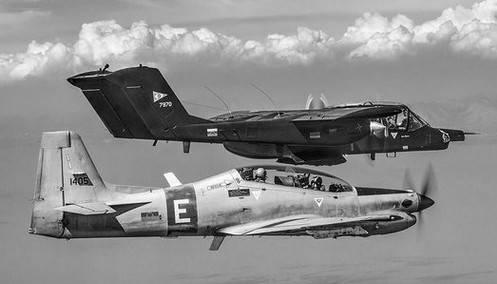
Turboprop attack aircraft OV-10 Bronco and AT-27 Tucano of the Venezuelan Air Force
In February 1992, "Tucano" and "Bronco" in the course of another attempt at a military coup by the rebels inflicted airstrikes on objects of government forces in Caracas. At the same time, one AT-27 was shot down by an F-16A fighter, and several more were damaged by the fire of anti-aircraft 12,7 mm machine guns. Currently, the Venezuelan Air Force formally lists 12 Tucanos, but all of them are in need of refurbishment.
In 1987, Paraguay acquired six Tucanos, three more used aircraft were supplied by Brazil in 1996. In the same year, Paraguayan Air Force attack aircraft were involved in counter-insurgency missions.
To intercept drug planes invading from Bolivia, several AT-27s were permanently deployed at the Mariscal air base in the northwestern part of the country. Since 7,62-mm machine guns are insufficiently effective when firing at air targets, the turboprop interceptors were armed with 20-mm cannons, and the flight range was increased due to outboard fuel tanks.
Iran acquired 25 Tucanos in early 1991, after the end of the Iran-Iraq war. Since the second half of the 1990s, turboprop attack aircraft of the Islamic Revolutionary Guards Corps intercepted drug caravans in eastern Iran, and also attacked Taliban units in areas bordering Afghanistan. In 2019, Iran had 21 EMBs 312.
In the second half of the 1980s, Peru faced the need to replace the exhausted Cessna T-37 Tweet jet trainer aircraft. For this, in the period from 1987 to 1991, 30 AT-27s were purchased, but subsequently 6 aircraft were resold to Angola. The first aircraft, used only for training flights, were painted white and orange.
However, after some of the Peruvian Tucanos began to be recruited for combat missions, they were given camouflage for the jungle, and some aircraft intended for night missions were painted dark gray. Peruvian AT-27s were decorated with an aggressive shark mouth to intimidate the enemy.
Since 1991, armed with containers with machine guns and NAR "Tucano" units, the Peruvian Air Force fought against gangs operating in the areas bordering Brazil and Colombia. These vehicles played a prominent role in the fight against the left-wing radical armed group Sendero Luminoso. Between 1992 and 2000, AT-27 aircraft of the Peruvian Air Force shot down 9 planes loaded with drugs and destroyed several river ships carrying contraband. At dawn on February 5, 1995, during the armed conflict with Ecuador, several Peruvian Tucanoes, each loaded with four 500-pound Mk.82 bombs, attacked Ecuadorian positions in the upper Senepa River. To be able to operate in the dark, the pilots had night vision goggles. In this war, the AT-27 showed themselves better than the Mi-25 combat helicopters and the A-37 jet attack aircraft, which suffered significant losses from MANPADS. Compared to helicopters, the sufficiently maneuverable "Tucano" had a higher flight speed, and due to the lower thermal signature of the turboprop engine, its capture by the IR seeker of MANPADS was difficult. During the war with Ecuador, AT-27s flew more than 60 combat missions. In a number of cases, they were used in the role of forward air gunners, marking detected targets with phosphorus ammunition, giving white smoke clearly visible from the air. After that, more high-speed and heavy combat aircraft were practiced at this place with bombs and missiles. At the beginning of the 21st century, some Peruvian Tucanos received overhead containers with infrared sensors, which allows them to detect crowds and equipment in the dark. In 2012, the Peruvian government announced its intention to modernize 20 EMB-312 aircraft.
In 1992, Colombia ordered 14 AT-27s, the delivery of the first six aircraft took place in December of the same year. For the first three years, Colombian "Tucano" performed only training flights, but as the situation in the country worsened, they were focused on performing the tasks of close air support and intercepting light aircraft carrying cocaine. In the second half of the 1990s, during operations against the Revolutionary Armed Forces of Colombia (FARC), the Tucano made more than 150 sorties without loss.
In 1998, Colombian turboprop attack aircraft were equipped with night vision equipment, which made it possible to suppress the activity of the rebels in the dark. In 2011, Embraer, together with the Colombian Aeronautic Industry SA, with US financial support, launched a program to extend the service life and improve the combat performance of the AT-27. In the course of refurbishment, aircraft receive a new wing and landing gear. The American company Rockwell Collins supplies multifunctional displays, navigation equipment and closed communication systems.
Turboprop attack aircraft based on the training Pilatus RS-7/9 Turbo Trainer and Embraer EMB 312 Tucano proved to be a very successful solution for many countries in need of such aircraft. Of course, single-engine aircraft are somewhat inferior in combat survivability and strike potential to the specially designed OV-10 Bronco, OV-1 Mohawk and IA-58A Pucar attack aircraft. However, not all states in need of anti-partisan aircraft, for political and economic reasons, could afford to purchase specialized counterinsurgency attack aircraft. In the early 1980s, Argentina asked about $ 58 million for the IA-4,5A Pucar twin-engine turboprop attack aircraft. At the same time, the EMB 312 Tucano, converted into an attack version of the T-27, cost $ 1 million on the foreign market. It is clear that it is better protected " Pukara ", carrying more powerful weapons, was preferable. But it can be argued with complete confidence that when performing typical tasks, "Pukara" in comparison with "Tucano" did not have 4,5 times higher efficiency. In addition, the cost per flight hour of single-engine aircraft built by Pilatus and Embraer was 2,5-4 times less than that of twin-engine products from FMA, North American and Grumman, which is very critical for the poorer Third World countries.
Turboprop attack aircraft at the end of the 1990th century proved to be an effective means of fighting insurgents and in some cases played a significant role in interstate armed conflicts. They have also been used effectively to curb drug smuggling and illegal mining of natural resources. As the onboard equipment improved, it became possible to search for and attack targets in the dark. Already in the 21s, there was a tendency to equip anti-partisan aircraft with high-precision weapons that can be used outside the zone of anti-aircraft fire. In the XNUMXst century, despite fierce competition from drones and attack helicopters, interest in light turboprop attack aircraft has not disappeared. As part of the campaign to combat international terrorism and the drug mafia, they were in demand and were actively used in "hot spots". This will be discussed in the next part of the review.
The ending should ...
- Linnik Sergey
- Light turboprop attack aircraft: the experience of Vietnam
Service and combat use of Argentine turboprop attack aircraft IA.58A Pucara
Service and combat use of OV-10 Bronco turboprop attack aircraft after the end of the Vietnam War
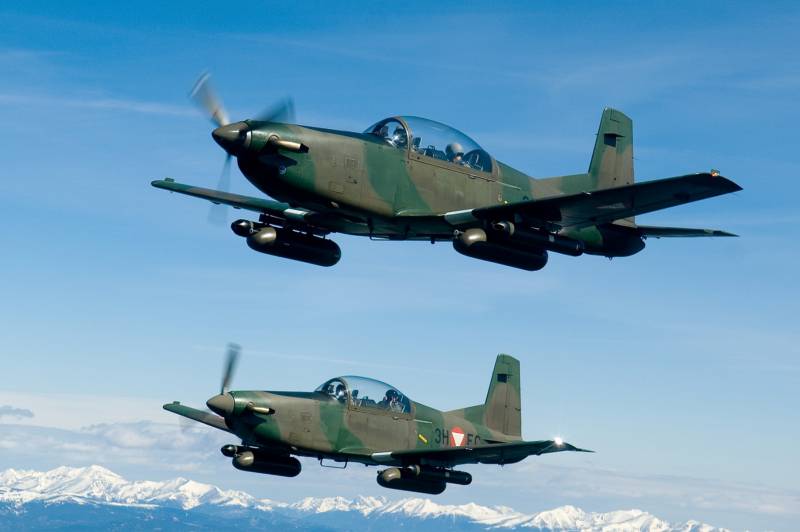
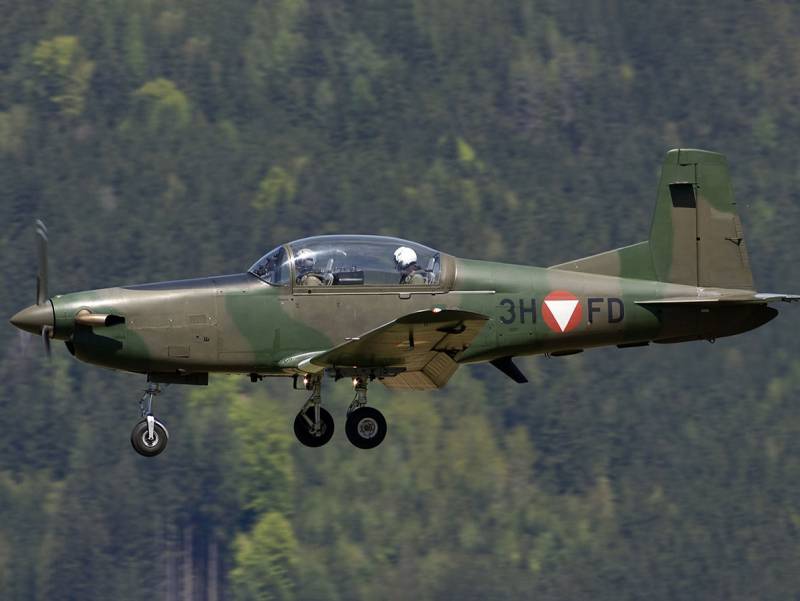
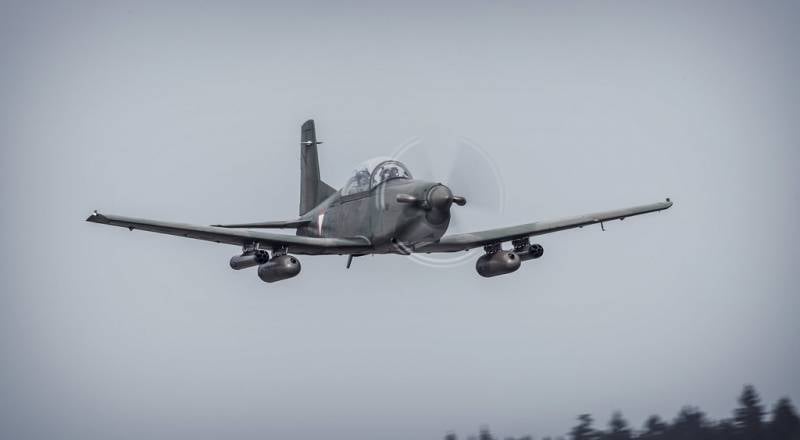
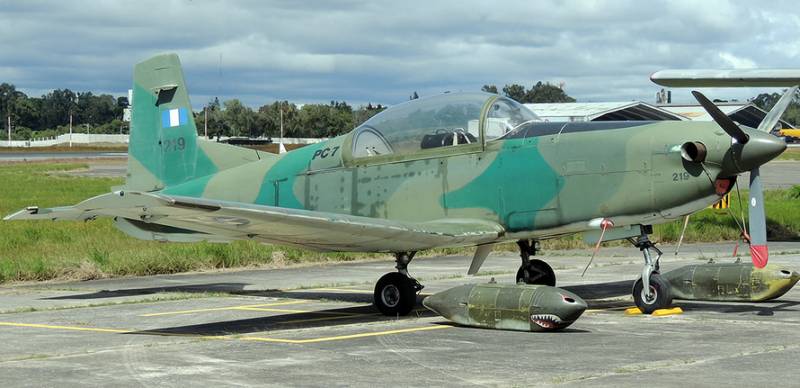
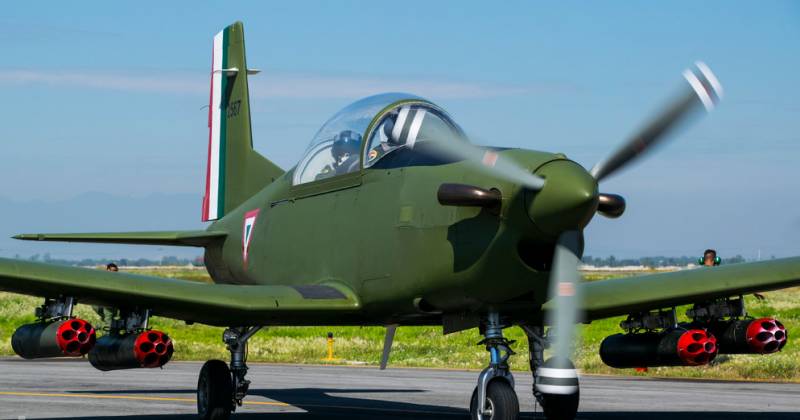
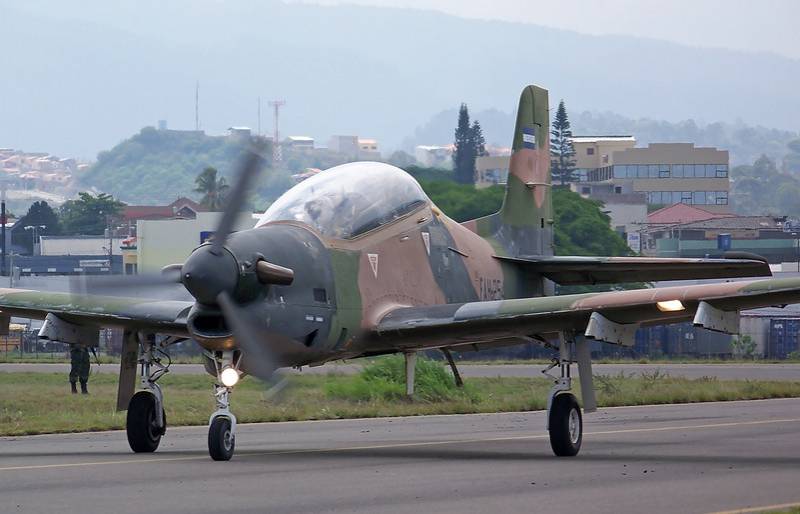
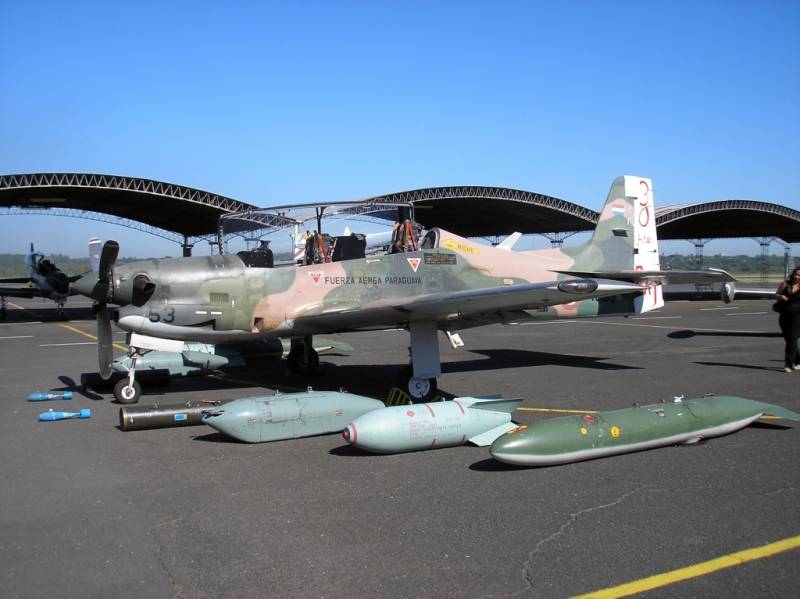
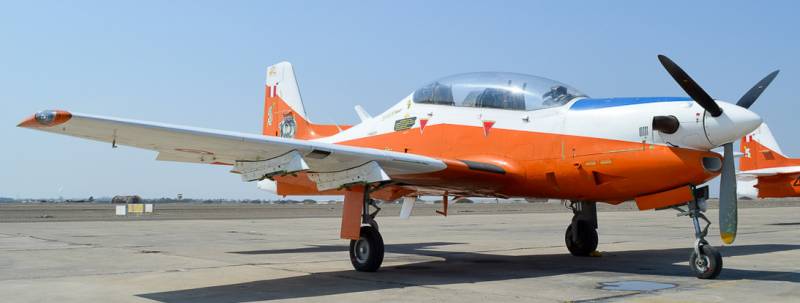
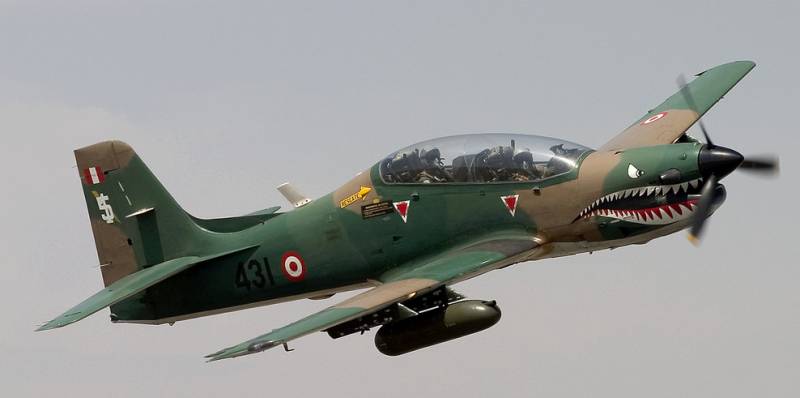
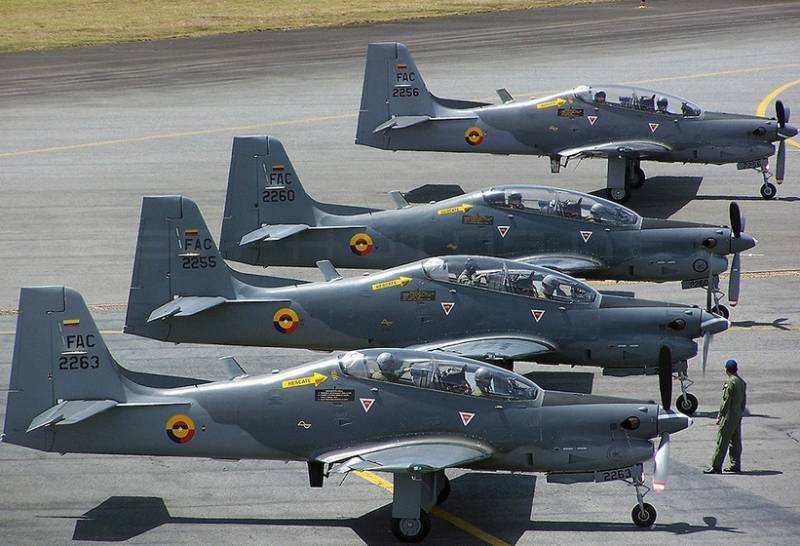
Information